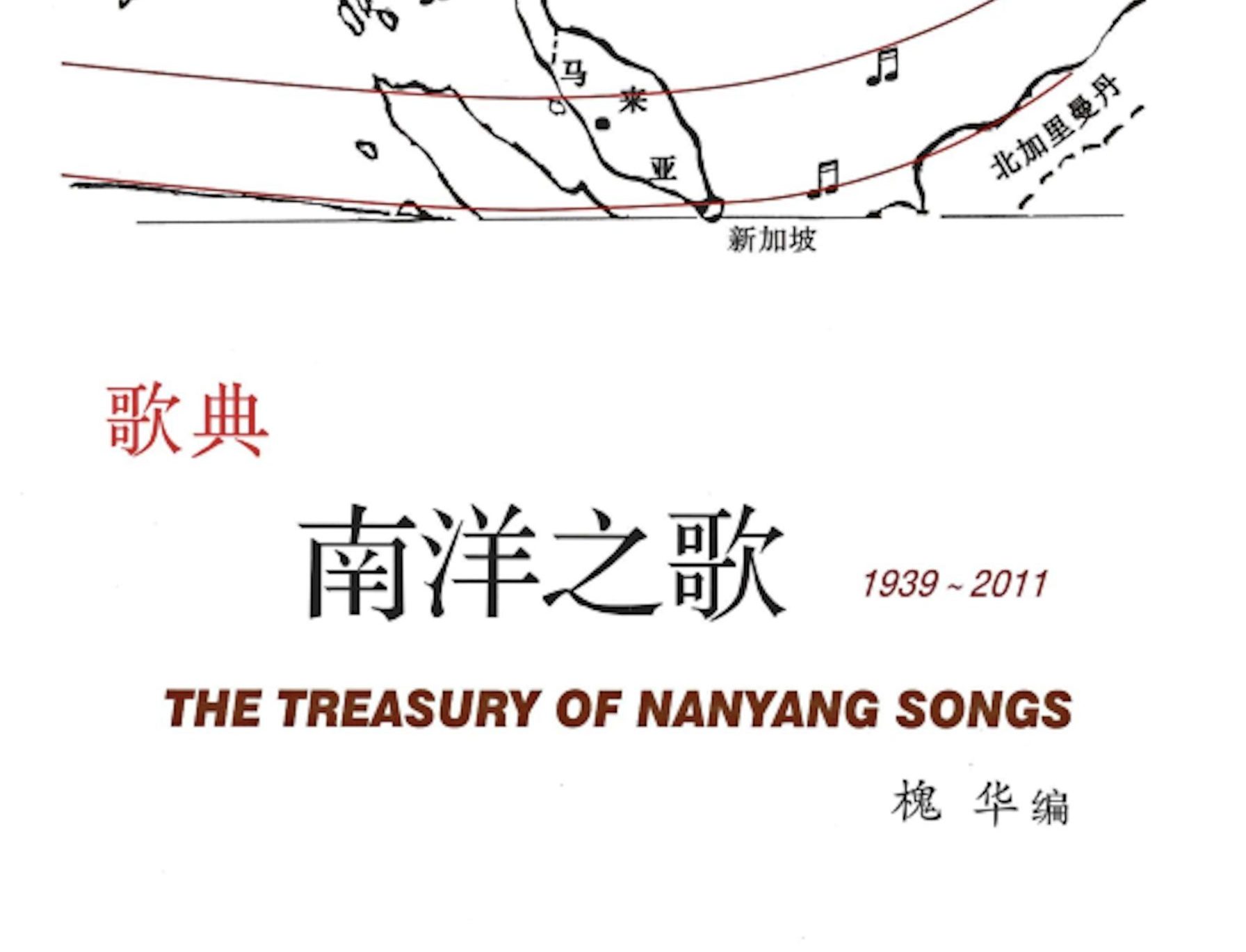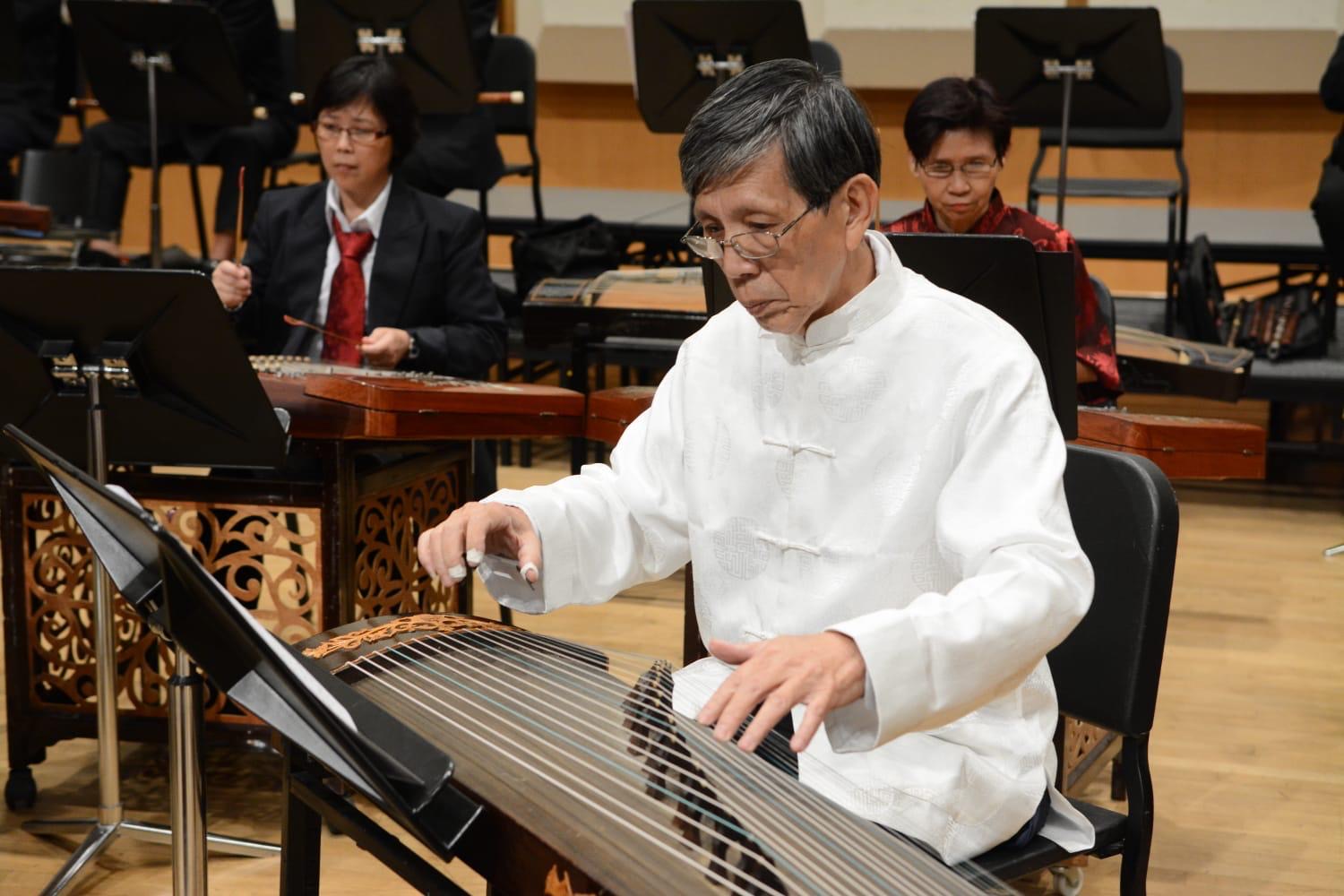Chinese songwriting in Singapore around Independence (1960s–1970s)
As Singapore society stabilised in the 1960s, the style of local Chinese songs evolved accordingly. While some of the songs written at this time still bore a “leftist” flavour, portraying an anti-colonial stance and extolling the working class, others clearly differed in style, and was filled with a sense of vitality towards building a new nation. Important composers of this period included Ma Ren (Wu Dingfeng, 1930–2019), Li Xuexun (also known by pen names Li Ying, Li Hua, and Qiu Ying, 1932–1991), Tien Ming Ern (1918–1994), Leong Yoon Pin (1931–2011), Ke Si (also known as Lee Khoon Choy, 1924–2016), Lee Yuk Chuan, and more.
Representative local Chinese songs written during the 1960s
- Ma Ren
- Wo di guxiang (My Homeland) (lyrics by Du Hong)
- Shui yaoshi beishang (Whoever is Sad)
- Taoxi ximi zhi ge (Tin Miners’ Song)
- Li Xuexun
- Women de ge (Our Song)
- Yuzhong zhi ge (Song in the Prison)
- Xian Dahai, Jiaolin zhi ge (Song of the Rubber Plantation)
- Xiao Lu, Shange (Mountain Song), from the opera Buqu de huangli yuan (Invincible Pineapple Plantation)
- Anonymous, Women de jiaxiang (Our Motherland)
- Opera piece, Pengheng de ernü (Children of Pahang)
- Tien Ming Ern
- Xinjiapo ni duo nianqing (How Young You Are, Singapore!)
- Chusheng de zhaoyang (Rising Sun)
- Leong Yoon Pin
-
- Meili de jiayuan (Beautiful Homeland)
- Pengyou, bie tanqi (Don’t Feel Sad, My Friend)
- Jianshe xinjiapo (Building Singapore) (lyrics by Ri Li)
- Samuel Ting (1925–2007)
- Shiyuhu shang de zuige (Drunken Song on the Shiyu Lake)
- Shantou gushi yuan tingting (Solitary Rock on the Hill)
- Di An (Soh Kay Cheng), Wo zai chuanshang denghou ni (I’ll Wait for You on the Boat)
- Lee Yuk Chuan
- Weiguo junsong (Ode to the Defence Forces) (lyrics by Huang Hongxia)
- Renren doushuo jinnian hao (Everybody Says This is a Good Year) (lyrics by Xin Xin)
- Hongjinnü gongge (Song of the Red-scarved Women Workers) (lyrics by Wang Qiutian)
- Laodong zhige (Labour Song)
- Qianjinba! Wo de guojia (Forward My Country)
- Wanli lübo fan bailang (Boundless Blue Waves with White Sprays)
- Ke Si
- Guoqi ge (National Flag Song) (lyrics by Jin Yi)
- Weiguo jinxingqu (Defence March)
- Guoqing ge (National Day Song)
- Wenhua zhandou ge (Song of Cultural Battle) (lyrics by Xiang Zhen)
- Haishang fang ge (Song on the Sea) (lyrics by Chu Sheng)
- Dangbing qu (Let’s Join the Army) (lyrics by Xin Xin)
In 1962, the first version (revised in 1993) of Singapore’s first oratorio was published. The piece titled Kongque dongnan fei (The Peacock Flies Southeast) by composer Leong Yoon Pin made a grand and refreshing debut, distinguishing itself from other Chinese vocal works in terms of musical style, creativity, and quality.
The 1970s marked a period when local private Chinese arts groups became more active. Creative arts productions, including theatre and dance, placed emphasis on the experience of labour in life, resulting in many songs of the same nature. Chew Seok Kwee (1954–2013), a former music instructor at the Singapore Performing Arts School (now known as The Theatre Practice) who later went to the United States for further studies, was one of the most prolific composers of that time. She was known for works such as Yucun zuge (Fishing Village Suite),1 Huangliyuan zuge (Pineapple Plantation Suite),2 and Linming zuge (Sungai Lembing Suite).3
Other pieces from the same period included the Southern Arts Society’s Yingchun (Welcoming Spring), Buwang4 (Mending the Net) (lyrics by a group, music by Zhu Ye), as well as more than 200 collectively- and anonymously- written songs of a similar style.5
The rise of songwriting competitions
During the mid- to late 1970s, both private and government organisations organised a series of songwriting competitions, catalysing the development of local compositions. Notable competitions included the “Our Songs” Songwriting Competition, jointly organised by the National Theatre Trust and Radio and Television Singapore in 1977, the “Song for Workers Competition”, jointly organised by Singapore Industrial Labour Organisation and Pioneer Industries Employees’ Union in 1978 and 1979, as well as the Nantah School Songwriting Competition organised by Nanyang University in 1979.

Local Chinese songs that came from songwriting competitions during the 1970s
- Shen Guanghui, Xinjiapo de qingnian (Singapore Youth)
- Chng Heng Hiong and Phoon Yew Tien, Wo shi gongheguo de xiaohuajia (I Am a Little Artist of the Republic) (lyrics by Soh Chai Thoan)
- Wu Ee Lung, Meili de jiaxiang (Beautiful Homeland)
- Quek Yong Siu and Ouyang Shanzhang, Xinjiapo xiang ni weixiao (Singapore’s Smiling at You)
- Chew Keng Hoon and Li Zhiqun, Qing ting zhangyi hailang (Listen to the Waves in Changi)
- Goh Aik Meng, Gongyou zhi ge (Workers’ Song)
- Tan Wee Seng, Gongyou jinxingqu (Workers’ March) (lyrics by Qian Keli)
- Phoon Yew Tien, Huanying xin huiyuan (Welcome New Members) (lyrics by Su Zaidun and Nanda song (Ode to Nantah) (lyrics by Mi Ran)
- Lee Kian Long, Laodong de ge’er chang buwan (Can’t Stop Singing the Labour Songs) (lyrics by Liu Shuling)
- Wang Ruixian, Jianzhu gongren zhi ge (Construction Workers’ Song) (lyrics by Ye Shuwen)
- Lee Yuk Chuan, Lingzhi guniang (Lingzhi Girl) (with librettist Huang Shirong) – this composition in 1973 was Singapore’s first complete and original operatic work in Chinese
Stylistically speaking, 1979 was a watershed year for local Chinese songwriting, with the creation of Leong Yoon Pin’s choral suite Libai shi sishou (“Four Poems of Li Bai”) which was unprecedented in its use of modern musical language in his attempt to reinterpret Chinese classical poetry.6Before this, songs written by amateurs and professionals alike tended to be more traditional and conservative in both technique and style. Leong’s epoch-making work differed entirely from its counterparts thus far, and was a testament to the growing maturity of local Chinese songwriting.
This is an edited and translated version of 趋向成熟:建国前后的新加坡华语音乐活动与歌曲创作(1960年代至1970年代). Click here to read original piece.
| 1 | The suite comprises Yufu qu (Fisherman’s Song), Yisuo yiluo ji xintou (Remember Every Effort), Dingjiao shenghuo bian ge yang (Our Life Must Change), Fengyu li wenba tuo (Steering Firm in the Storm), and Shuguang li (In the Morning Light). |
| 2 | The suite comprises Chang lixiang (Singing about Pineapple Country), Pan fengshou (Wishing for a Bumper Crop) (music by Liu Minghui), Fengshou de shihou (Harvest Time), Lixiang ku (Sorrow of Pineapple Country), and Wei lixiang de mingtian er gechang (Singing for the Future of Pineapple Country). |
| 3 | The suite comprises Linming – women de jiaxiang (Sungai Lembing – Our Home), Linming de heshui xi you chang (The River of Sungai Lembing is Long and Narrow), Huainian jiaxiang (Thinking of Home), and Linming hepan gesheng yang (Singing by Sungai Lembing). |
| 4 | Soundtrack of music, dance and poetry performance Bangluo yuge (Fishermen’s song of Pangkor Island) |
| 5 | Most of these songs are compiled in Nanyang zhige xuji [Nanyang songbook 2], edited by Wang Yonghong and published by Lin Cixun. |
| 6 | The four poems featured were Yu shang qingtian lan mingyue (Wishing to Fly to Embrace the Moon), Bajiu wenyue (A Toast to the Moon), Qiangjinjiu (Come Drink with Me) and Huajian yi hu jiu (A Pot of Wine within Flowers). |
| 7 | 《欲上青天揽明月》《把酒问月》《将进酒》《花间一壶酒》。 |
Chia, Wei Khuan. “Xinjiapo de huawen hechang huodong” [Chinese choral activities in Singapore]. In Fujian yishu, Issue 5 (2017): 50–51. | |
Choo, Woon Hock. “Benteng de haiyang: Maren” [Rolling sea: Ma Ren]. Lianhe Zaobao, 1 August 2019. | |
Du, Qing, ed. Jiaolin womende muqin: yige yinyuejia jiannan de xuexi lucheng [Rubber plantations, our Mother: The hardships of a musician in his journey of learning]. Singapore: World Scientific Publishing, 2009. | |
Huai, Hua, ed. Gedian: nanyang zhige, 1939–2011 [The Treasury of Nanyang songs, 1939–2011]. Singapore: Zhaohui Arts and Culture Publishing, 2013. | |
Lee Howe Choral Society, ed. Lihao hechangtuan chengli sanshi zhounian jinian tekan [Lee Howe Choral Society’s 30th anniversary special concert issue]. Singapore: Lee Howe Choral Society, 1982. | |
National Arts Council, ed. Singalong: A collection of Singapore Songs (Lyrics). Singapore: National Arts Council and Ministry of Information and the Arts, 1997. | |
National Theatre Composers’ Circle, ed. Xinjiapo gequ chuangzuo [Songs written in Singapore] Vol. 2. Singapore: National Theatre Composers’ Circle and Seng Yew Book Store, 1986. | |
People’s Action Party Central Cultural Bureau, ed. Xinjiapo song: bendi chuangzuo yuequ xuanji [Ode to Singapore: A selection of local compositions]. Singapore: People’s Action Party Central Cultural Bureau, 1968. | |
Tien, Ming Ern, ed. Zhongxue geji [Songbook for secondary schools]. Singapore: Educational Publishing House, 1968. | |
Wang, Yonghong and Lin, Cixun, eds. Nanyang zhige xuji: qishi niandai bendi chuangzuo geji [Nanyang songbook 2: A collection of local compositions from the 1970s]. Self-published, 2019. |










